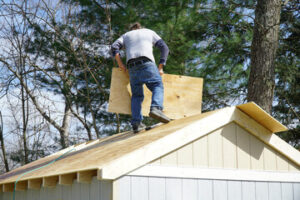Before 2008, mortgage lenders and Realtors got a bad rap. They were partly blamed for lending too easily to people with no income, and then when the housing bubble burst, some borrowers couldn’t pay their loans and lost their homes.

Real estate agents know neighborhoods and houses inside out. They’ll help you find the right home for your needs and budget. To learn more, click https://www.yourhometampabayarea.com/.
Realtors have the training and experience to help you navigate buying or selling a home. They know your local market and can offer insights into neighborhoods, schools, traffic patterns, commute times and other factors that might affect your decision. Depending on your needs, a Realtor can also help you find financing and negotiate with sellers.
If you’re selling your home, a Realtor can provide advice on what repairs or cosmetic work will increase your home’s resale value and help you arrange for professional photographs and videos. They can also list your home in the Multiple Listing Service (MLS) and on popular websites like Zillow. They can hold open houses and show the property to potential buyers as well as other real estate agents who have clients interested in your home. Realtors will also handle all the legal paperwork involved in a sale.
In some cases, Realtors can recommend contractors who can do the necessary work. And once you’ve accepted an offer, they’ll work with the buyers’ agent and title company to bring the transaction to a close.
Sellers often hire Realtors to make sure all disclosures are filled out correctly and that the buyers’ loan can be approved. They can also assist with the closing process by reviewing contracts and ensuring that the terms of the agreement are met.
As members of the National Association of Realtors (NAR), Realtors must follow ethical standards and have access to legal support services, training and discounted health, auto, homeowners and renters insurance plans. They’re also required to take continuing education classes to keep their licenses active.
Although it’s possible to sell a home without a Realtor, the effort and expense of hiring one typically pays off. According to a study by Collateral Analytics, FSBO homes sell for 6% less than comparable properties sold by agents. And a Realtor can save you time by handling marketing, house showings, inquiries from the public and other details of a real estate transaction.
Finding Potential Homes
When it comes to buying a home, your Realtor can help you find a home that meets your needs while staying within your budget. They can also help you determine if the property has the potential to increase in value or if it’s overpriced based on its neighborhood and current market conditions.
Real estate agents have access to a wide range of properties on the market, via the multiple listing service (MLS), and can save you time by scheduling viewings for you at homes that meet your criteria. Additionally, your agent can help you get pre-qualified for a mortgage loan, which is an important first step in the process. They also know which questions to ask to determine if a home buyer is serious about purchasing a property, such as asking for proof of income and bank statements.
A Realtor can also help you make an offer on a home and guide you through the negotiation process. They’ll take into consideration the price of similar homes on the market, local amenities and zoning rules when making an offer. In addition, they’ll have an understanding of the local community and can provide you with valuable insights on schools, crime rates and more.
Whether you’re looking for your first home or an investment property, a Realtor can help you find homes with hidden potential that will increase in value over time and potentially yield a profit. By listening to your likes and dislikes, they can recommend neighborhoods that are a good fit for you and help you set realistic expectations about what you can afford.
If you’re interested in a specific area, your Realtor can check with other real estate agents in the office or neighborhood for intel on homes that are coming soon to the market or are in “pocket listings” that they’re hoping to get on the radar. They can even reach out to homeowners directly to see if they’re open to selling.
Real estate agents also work with renters. They can help you find a rental that fits your lifestyle and budget, as well as provide you with information about home ownership programs and down payment grants. They can also connect you with a lender to get pre-qualified for a mortgage loan, and they can help you find contractors and home inspectors.
Negotiating Offers
When you’ve found the home of your dreams, it’s time to make an offer. And that’s where the fun really begins — real estate negotiations can be tricky and confusing. But that’s where a Realtor comes in handy, as they know how to navigate these complex situations to help their clients get the best deals possible.
A good real estate agent will start by determining what a property is actually worth and how much buyers can afford to pay for it. They’ll then use this information to craft a strong offer that’s likely to be accepted, while also leaving room for potential counteroffers and other adjustments. They may also suggest including non-price items like a shorter closing period or a home warranty, which can add value to an offer and give buyers a leg up in the negotiation process.
During the negotiation process, it’s important to be direct and clear with what you want. You don’t want to beat around the bush or be evasive, as this will only make the other party suspicious of your intentions. Having a clear goal in mind and clearly communicating this to the other party will speed up the negotiation process, getting you closer to acceptance and closing sooner.
Every client will have a list of non-negotiables, which are the factors that they are not willing to compromise on. Your Realtor will work with you to determine your own list of non-negotiables, and will be able to help you narrow down the properties that you are interested in purchasing so that you don’t waste time on homes that you are not going to be able to buy.
During a multiple offer situation, your Realtor will provide you with information about the various negotiating strategies that are available to you and will explain the pros and cons of each. They will also help you decide which one is the best fit for your needs based on the current market conditions and your financial capacity. They’ll also help you create a strategy for how to distinguish your offer from the others, which can include a well-timed escalation clause or personalized elements like a heartfelt letter.
Closing the Deal
The closing process is the last step in a real estate transaction. The Realtor will help their client complete all necessary paperwork and answer any questions about their home purchase or sale. They also assist their clients with scheduling inspections and moving dates. They will guide their clients through the entire home buying or selling process from start to finish.
Closing a real estate deal can be time consuming. The real estate agent will need to work with lenders, title insurance companies, and escrow agents. They will also need to meet all of the deadlines. The seller and buyer will need to make sure that they are both comfortable with the terms of the contract. It is important for the real estate agent to keep in touch with the parties involved and to communicate any issues quickly.
In order to close more deals, it is important for real estate agents to have a network of people that they can refer to when needed. This is called cross-selling and can be an effective way to increase business. Depending on the laws of your state, you may be able to compensate people who help you close sales with referral bonuses.
When you are working with a client, it is important to ask them what their budget is so that you can show them houses that fit within their price range. This will save you time and money in the long run. It is also a good idea to keep an eye on the market, so that you can get an accurate picture of the current state of the real estate market in your area.
It is also important to ask your clients what their needs and expectations are. Some real estate agents can be pushy and may not listen to their customers. This can be a big turn off for potential buyers and can cause them to go with another agent.
Lastly, it is important to close the deal by getting your clients insured and making sure that they sign all of the necessary documents. After a closing date is set, it is important for the property to be secured by changing the locks and placing plywood over any broken windows. Lastly, it is important to get the property inspected by a professional before closing. This will ensure that the property is in good condition and that there are no problems that need to be addressed before the closing date.
